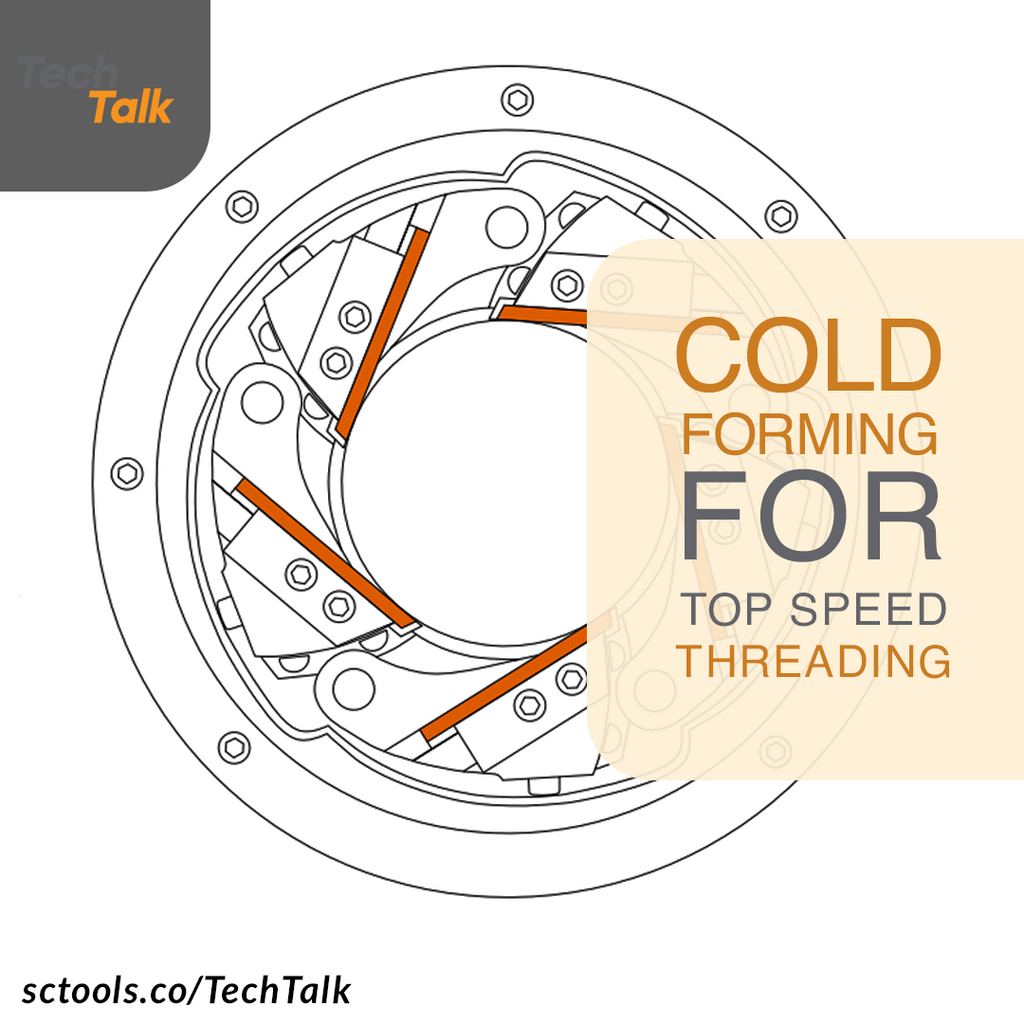Cold forming, also known as cold roll forming, is a forging method for shaping metal materials close to room temperature. Forming metal at lower temperatures preserves or improves the material's tensile strength while allowing for delicate processing.
This high-speed method allows the production of large quantities of metal products quickly, efficiently, and cost-effectively. Cold-formed materials are tougher, create more yield, have higher tensile strength, and have a better surface quality than high-heat developed products.
The Cold Forming Process
The pre-hole in the material must be formed first before the internal thread can be made. Aside from the thread dimensions (diameter, tolerance, and pitch size), the hole diameter is also determined by the threading technology utilized. In the cold forming process, a cold-forming tap is screwed into the material, and the material is deformed to generate the thread profile.
The drilling operation previously formed the internal thread diameter in the traditional tapping process. Still, the inner thread diameter in the cold forming process is only produced after the material deformation.
The drill diameter for conventional tapping operations is standardized due to this effect. In contrast, the hole diameter for cold forming operations is primarily determined by the machined material, friction conditions on the cold forming tap's flank, the tool's flank tolerance, and the forming speed.
Because the internal thread diameter is formed by deforming the material, the drill diameter must be larger than traditional tapping. The forming tap must distort too much material if the exact drill size is utilized for conventional tapping and cold forming.
Internal Thread Manufacturing Technologies
In construction and mechanical engineering, connecting parts is a typical task. But this connection cannot be disassembled if it is necessary to change parts or components. In this case, the design engineer will typically use a connection consisting of an internal thread and bolt.
Threaded bolt connections can be found in various construction and industrial areas, material components, and dimensions due to their well-known international standards. The connection is based on a bolt with the necessary external thread profile and an internal thread for the fastening.
Metals Suitable for Cold Roll Forming
All machinable materials can be used for conventional tapping and thread milling. Cold thread formation is only practical if the material is formable, which is a key limitation. Three material properties should be examined to determine whether cold thread forming methods can be used in the application, i.e., elongation rate, residual strength, and silicon content in Aluminum-Silicon alloys.
Cold forming can be carried out with a wide range of metals, including:
- Steel Alloy (1045, 1117, 1215, 4140, 4150, 4340, 8620, H-11)
- Most materials with a hardness of up to 44 HRC
- Naval brass
- Aluminum (316, 416, 17-4) Stainless Steel (316, 416, 17-4) (2024, 6061)
- Other materials, such as cast iron, are too fragile for this technique.
Advantages of Cold Forming
Material usage that is very efficient (high yield)
Cold forming's excellent material usage saves material waste (scrap) compared to machining for the same design.
Production at a more rapid and efficient rate
Cold forming enables high-speed production (up to 100 pieces per minute) while retaining high quality and complicated product geometries. There is no need to heat the material.
Enhanced product strength through work hardening
Fiber flow lines (the crystal structure of metals) are considered while designing cold forming processes, resulting in stronger, longer-lasting products.
Customized manufacturing procedures result in cost savings
If a client design (tolerances, geometry, amount of components required, etc.) can be achieved using cold forming, considerable cost savings and process complexity can be achieved.
Disadvantages of Cold Forming
-
Forming dies must be created (initial cost and lead time)
-
Due to the time it takes to set up and calibrate manufacturing equipment for a specific item, this method is not well suited to low-volume production runs (best for mass production)
-
Cold forming leaves radii on most corners by nature, and accuracy isn't as good as machining.
Precise Equipment for Producing Exterior Threads Efficiently
Thread Rolling Systems with Axial Axis
The Wagner axial thread rolling system produces threads with the best surface quality in an unrivaled wide diameter range. The ability to change roller holders conveniently and quickly enables the unique types of rolling systems to perform well on machining tasks.
The functioning range and holder angle are different. Knurling, beading, rolling-in, and smoothing are some of the other forming procedures that may be done. The heads can be used in either a stationary or revolving position.
Thread rolling machines are used to make screws, bolts, and studs. Thread rolling is a cold-form procedure used to create external screw threads in a blank. During thread rolling, a hard die is pushed onto a revolving workpiece (also known as a blank) attached to the thread rolling machine during thread rolling.
SCTools supplies cold-rolled components to a variety of industries. Our innovative method enables the industry's closest tolerances while giving maximum strength and excellent surface finishes.
 |
If you have any questions about carbide cutting tools, end mills, drills, etc. be sure to reach out to us @ sctools.co/Home or call us at (877)737-0987. We help you machine better! |



Comments (0)